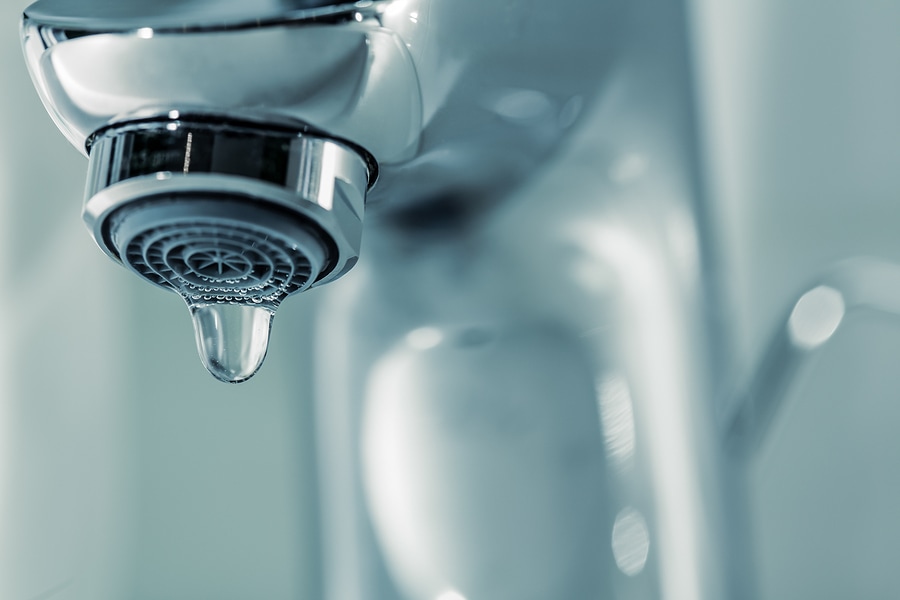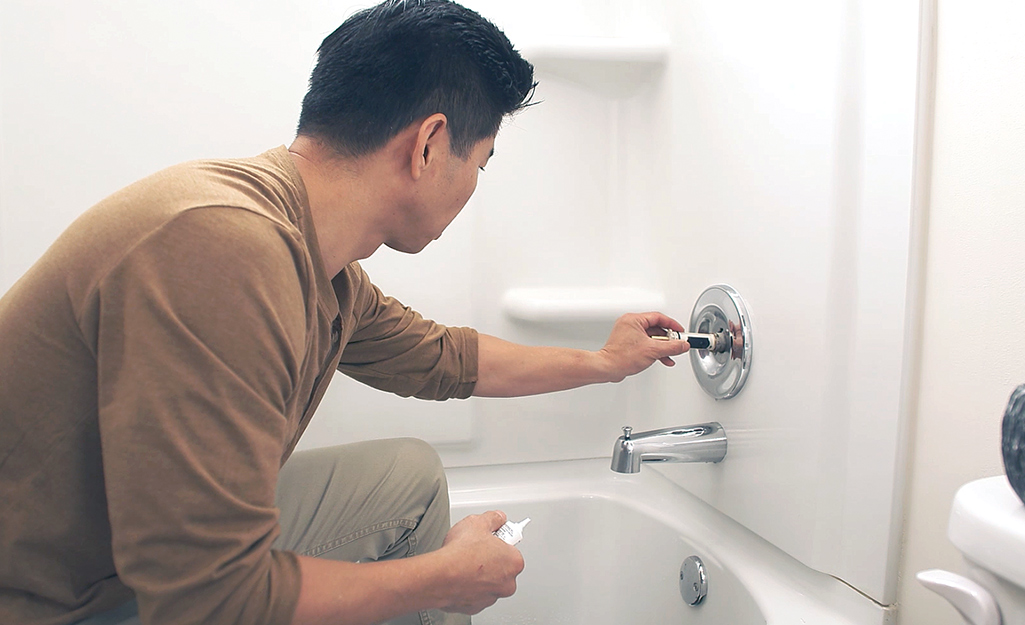Our Benefits of Fixing a Dripping Faucet
Our Benefits of Fixing a Dripping Faucet
Blog Article
This post down below pertaining to How to Fix a Dripping or Leaky Faucet is exceptionally intriguing. Don't miss out on it.

Trickling faucets might look like a minor trouble, but their effect exceeds simply the annoyance of the sound. From wasting water to incurring unneeded financial expenses and health risks, ignoring a leaking faucet can cause numerous consequences. In this write-up, we'll delve into why it's crucial to address this usual household problem promptly and efficiently.
Wastage of Water
Environmental Effect
Leaking taps add considerably to water waste. According to the Epa (EPA), a solitary tap trickling at one drip per second can throw away more than 3,000 gallons of water per year. This not just strains water sources but likewise influences environments and wild animals dependent on them.
Step-by-Step Guide to Taking Care Of a Dripping Faucet
Devices Required
Prior to trying to take care of a leaking tap, collect the needed devices, including a flexible wrench, screwdrivers, substitute components (such as washing machines or cartridges), and plumber's tape.
Common Faucet Issues and Their Solutions
Recognize the type of faucet and the details concern triggering the drip. Typical problems consist of worn-out washers, corroded valve seats, or malfunctioning O-rings. Refer to maker directions or on the internet tutorials for step-by-step assistance on repair work.
Financial Prices
Increased Water Bills
Past the ecological impact, dripping taps can pump up water expenses significantly. The collected waste with time converts right into greater utility costs, which could have been stayed clear of with prompt repairs.
Potential Home Damages
In addition, prolonged trickling can bring about harm to components and surface areas bordering the faucet. Water accumulation can trigger staining, deterioration, and also architectural concerns if left ignored, causing added repair work expenses.
Health Issues
Mold and Mold Growth
The consistent visibility of dampness from a trickling faucet produces a perfect environment for mold and mildew growth. These fungi not just compromise interior air top quality however likewise pose wellness risks, particularly for individuals with respiratory system problems or allergic reactions.
Waterborne Diseases
Stationary water in trickling faucets can come to be a breeding place for microorganisms and other microorganisms, raising the danger of waterborne conditions. Contaminants such as Legionella germs prosper in stagnant water, possibly causing major illnesses when consumed or breathed in.
Do it yourself vs. Expert Repair work
Pros and Cons of Do It Yourself Repair Work
While some might attempt to repair a trickling faucet themselves, do it yourself fixings feature their very own set of obstacles. Without correct expertise and devices, DIY efforts can worsen the problem or bring about incomplete fixings, prolonging the problem.
Advantages of Working With an Expert Plumber
Hiring a specialist plumber ensures that the underlying reason for the leaking faucet is attended to successfully. Plumbing professionals have the knowledge and devices to detect and fix tap issues effectively, conserving time and decreasing the risk of further damages.
Environmental Responsibility
Individual Payment to Conservation
Taking responsibility for taking care of leaking taps straightens with wider initiatives toward water preservation and ecological sustainability. Every person's actions collectively make a significant impact on maintaining precious sources.
Lasting Living Practices
By focusing on timely repair work and adopting water-saving habits, individuals contribute to lasting living practices that benefit both existing and future generations.
Preventive Measures
Regular Maintenance Tips
To stop dripping faucets, perform routine upkeep such as cleaning aerators, inspecting for leaks, and replacing worn-out components without delay. In addition, think about setting up water-saving tools or updating to extra effective fixtures.
Significance of Prompt Fixes
Attending to leaking faucets as quickly as they're noticed protects against further water waste and prospective damages, inevitably saving both water and cash in the future.
Effect On Property Value
Perception of Well-Maintained Building
Maintaining a home in good condition, consisting of dealing with maintenance problems like dripping faucets, improves its regarded worth and value amongst prospective purchasers or lessees.
Influence on Resale Value
Qualities with properly maintained plumbing fixtures, consisting of faucets, command greater resale worths in the realty market. Addressing dripping faucets can contribute to a favorable impact throughout home examinations and arrangements.
Verdict
Resolving a leaking tap exceeds simple convenience; it's a necessary step towards preserving water, decreasing monetary costs, and safeguarding health and residential property. Whether through do it yourself repair work or expert aid, acting to fix dripping taps is a tiny yet impactful method to advertise responsible stewardship of sources and contribute to a much healthier, much more sustainable future.
How to Fix a Leaky Faucet: Step-by-Step Repair Guide
A leaky faucet may seem like a simple annoyance, but if it's not fixed promptly, that leak could cost hundreds to potentially thousands. From water damage to mold, mildew, and high water bills, even a tiny leak can be catastrophic if left unattended. Damage like this can even affect the overall value of your home, so it's important to take the right approach for leaky faucet repair. You may need the help of a plumber in some cases, but we've got a few tips you can try on how to fix a leaky faucet before calling the pros.
Four Faucet Types
When you're learning how to fix a leaky faucet, the first step is knowing what kind of faucet you're working with! There are four common types.
Cartridge Faucets
Cartridge faucets come in one- or two-handled varieties. In one-handled cartridge faucets, hot and cold water combines in a single cartridge. In the two-handled versions, hot and cold water are controlled separately and mixed in the faucet.
Ball Faucets
Ball faucets have a single lever you push up and down to adjust the pressure and rotate to change the temperature. A slotted metal ball controls the amount of water allowed into the spout.
Compression Washer Faucets
They're the oldest type of faucet, but they're still used in many homes — especially older ones. Compression faucets have two separate handles that, when turned, raise or lower the washer that seals a water valve. This valve stops water from flowing through the faucet when it is turned off.
Disc Faucets
Disc faucets rarely need to be repaired due to their maintenance-free design. The water flow is controlled by two discs — the upper one raises and lowers against a fixed lower disc, creating a watertight seal. If your disc faucet starts leaking, you may need to replace the seals or clean residue buildup from the inlets.
Fixing a Leaky Faucet
Step 1: Turn Off the Water
Whether you're learning how to fix a leaky bathtub faucet or how to fix a leaky kitchen faucet, always turn off the water supply to your working area when you're fixing a leak. The last thing you want is a flood added to your list of things to fix.
Look for the shutoff valves below your sink or around the tub and turn them clockwise to stop the water flow. If your faucet doesn't have shutoff valves, you may need to turn off the water for the whole house. Check to make sure it's off by turning the faucet on. If nothing comes out, you're ready to start the repair.
Step 2: Take Apart the Faucet
How you disassemble your faucet depends on the type of fixture you have. You can use a flathead screwdriver to remove the caps on top of the handle or handles for cartridge and compression faucets. Inside, you should see handle screws. Unscrew these with a screwdriver to remove the handle.
Disc- and ball-style faucets will typically have an inlet screw near the handle, and removing that will reveal the interior of the faucet.
Detach the Valve Stem
For cartridge- and compression-style faucets, you'll see the inner valve stem or cartridge once you remove the faucet handles. If you have a compression faucet, unscrew the brass valve stem. If you have a cartridge faucet, pull out the cartridge. If your cartridge has been in place for a while, it may require some tools or extra force to remove it due to mineral deposits.
Examine and Replace Parts
Once you've removed the parts, check them out to confirm what needs to be replaced. You may see corroded rubber washers, O-rings, stems, or cartridges. On a ball-style faucet, check the seats and springs for damage.
If you need to repair a leaky disc faucet, check the inlet and seals on the lower disc.
Once you determine what parts must be replaced, visit your local hardware store. Bring the damaged parts with you to ensure you can purchase the correct components to replace them.
Clean Valves and Faucet Cavity
If you've removed a stem or cartridge, you may notice mineral buildup in the faucet's threads. Use white vinegar to clean the valve seat by soaking it for a few minutes, then scrub it away with a soft toothbrush and rinse with warm water. You can also clean the interior of the faucet in the same way.
Reassemble the Faucet
Once your faucet is cleaned and the required parts have been replaced, it's time to reassemble it. Put the pieces back together and slowly turn the water supply back on. Doing this slowly is crucial because too much initial water pressure can damage the new hardware you've just installed.
https://homewarranty.firstam.com/blog/how-to-fix-leaky-faucet

We had been made aware of that write-up about Why It's Important to Fix Leaky Faucets through an associate on another web property. Enjoyed our content? Please quickly share it. Let others check it out. I enjoy your readership.
Report this page